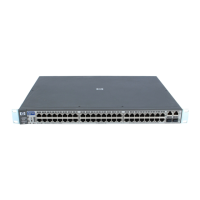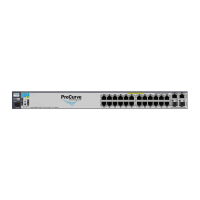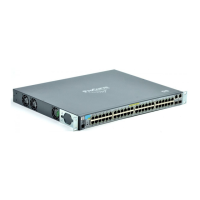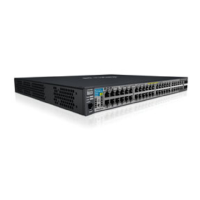9-10
Optimizing Traffic Flow with Port Controls, Port Trunking, and Port-Based Priority
Port Trunking
Port Trunking
Port Status and Configuration Features
Port trunking allows you to assign up to four physical links to one logical link
(trunk) that functions as a single, higher-speed link providing dramatically
increased bandwidth. This capability applies to connections between back-
bone devices as well as to connections in other network areas where traffic
bottlenecks exist. A trunk group is a set of up to four ports configured as
members of the same port trunk. Note that the ports in a trunk group do not
have to be consecutive. For example:
Figure 9-5. Conceptual Example of Port Trunking
Feature Default Menu CLI Web
viewing port trunks n/a page 9-16 page 9-18 page 9-24
configuring a static trunk
group
none page 9-16 page 9-22 —
configuring a dynamic LACP
trunk group
LACP passive — page 9-23 —
Switch 1:
Ports c1 - c4
configured
as a port
trunk group.
The multiple physical links in a trunk behave as one logical link
port c1
port c2
port c3
port c4
port c5
port c6
port c7
. . .
port n
port a1
port a2
port a3
port a4
port a5
port a6
port a7
. . .
port n
Switch 2:
Ports a3 - a6
configured as
a port trunk
group
!Software.book Page 10 Thursday, October 10, 2002 6:10 PM

